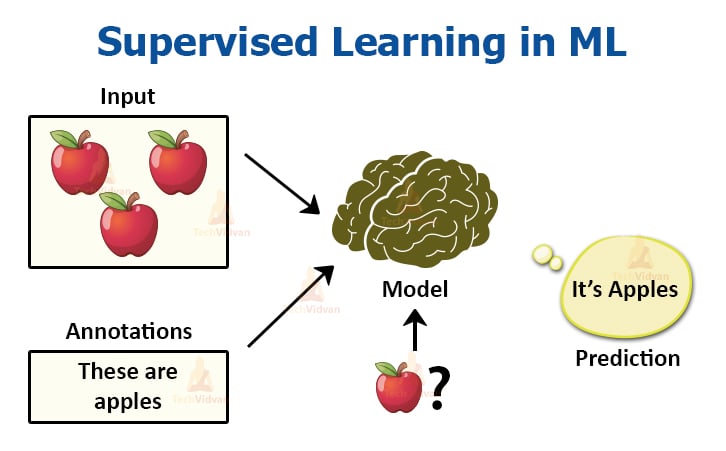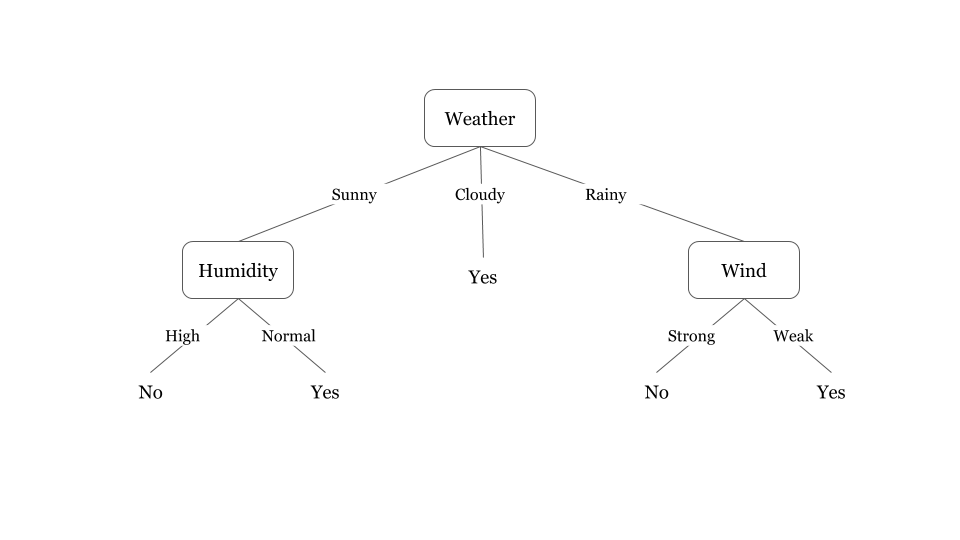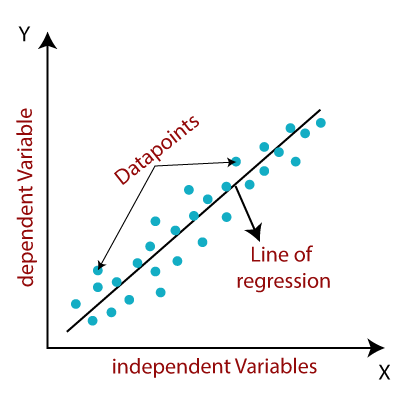I.Introduction:
YO!!! as a Machine learning enthusiast myself, I am constantly working on improving my knowledge in ML, for the past week I have been learning stuff about the different Machine Learning algorithms that are being utilized in our day-to-day life, so I thought why not share my learnings with everyone through a blog post.
In this blog post, I'll be discussing the basics of supervised learning and why it's so important in machine learning. By the end of this post, you'll have a solid understanding of the key concepts and terminology associated with supervised learning So let's get started!
II. How Supervised learning works:
First of all, let's see what supervised learning means, Supervised Learning is one of the Machine Learning algorithms that we use to train our ML model.
It is algorithms that learn X->Y, where X is the input label and Y is the right answers.
so essentially what we do is give the learning algorithm examples of the "right answers", here "right answers" mean the correct output for the problem/input X.
look at the image to get an understanding of what I mean,

there are some key steps that we need to follow to implement the algorithm:
Data preparation: We clean the data and prepare it for further analysis.
Training and testing data: The cleaned data is then separated into two subsets: training data and testing data.
Model fitting: The goal of model fitting is to find the best possible model that can accurately predict the output variable based on the input variables.
Model evaluation: once the model has been trained using the training data, it is evaluated using the testing data. The goal is to select the model that performs the best.
III. Types of Supervised learning problems:
Supervised learning problems can be categorized into two types namely:
Classification:
Classification is a type of supervised learning problem where the goal is to predict a categorical variable, such as a binary (yes/no) outcome or a multi-class outcome. For example, we use classification to predict if it is going to be hot or cold tomorrow(multi-class outcome).
Regression:
Regression is a type of supervised learning problem where the goal is to predict a continuous variable, such as a numerical value or a price. For example, we can use regression to predict the temperature for tomorrow in Fahrenheit or celsius.
IV. Common Algorithms used in Supervised learning:
The following are some of the common Supervised Learning algorithms:
Decision Trees:

Random Forest:

Linear Regression:

I have given the basic diagrams for the mentioned algorithms, I'll be explaining each one of these algorithms individually in future blog posts so stay tuned.
V. Advantages and Disadvantages of Supervised learning:
Advantages:
Supervised learning is a powerful tool for prediction and classification problems, If you can provide accurate training data and input variables, the algorithm gives you highly accurate results.
Supervised learning can be easily understood and implemented. It is also easier to explain to non-technical people.
Out of the 3 Machine Learning algorithms, Supervised Learning is the most implemented algorithm.
Disadvantages:
Supervised learning requires labeled training data, which can be expensive and time-consuming to collect.
Supervised learning assumes that the training data is the accurate representation of real-world data.
Supervised learning is not well-suited for problems where the relationships between input variables are complex.
VI. Conclusion:
So to recap, we first saw what Supervised learning means and what the different steps involved in implementing the algorithm are. Followed by the types of Supervised learning problems in which we learned about Regression and classification.
After that, we saw some algorithms that are used for Supervised learning: decision trees, random forest and linear regression. Then we saw some advantages and disadvantages of Supervised learning.
If you have come this far in the blog post I really appreciate you for giving your time to read this blog post and I am looking forward to sharing my learnings in future blog posts with you.
